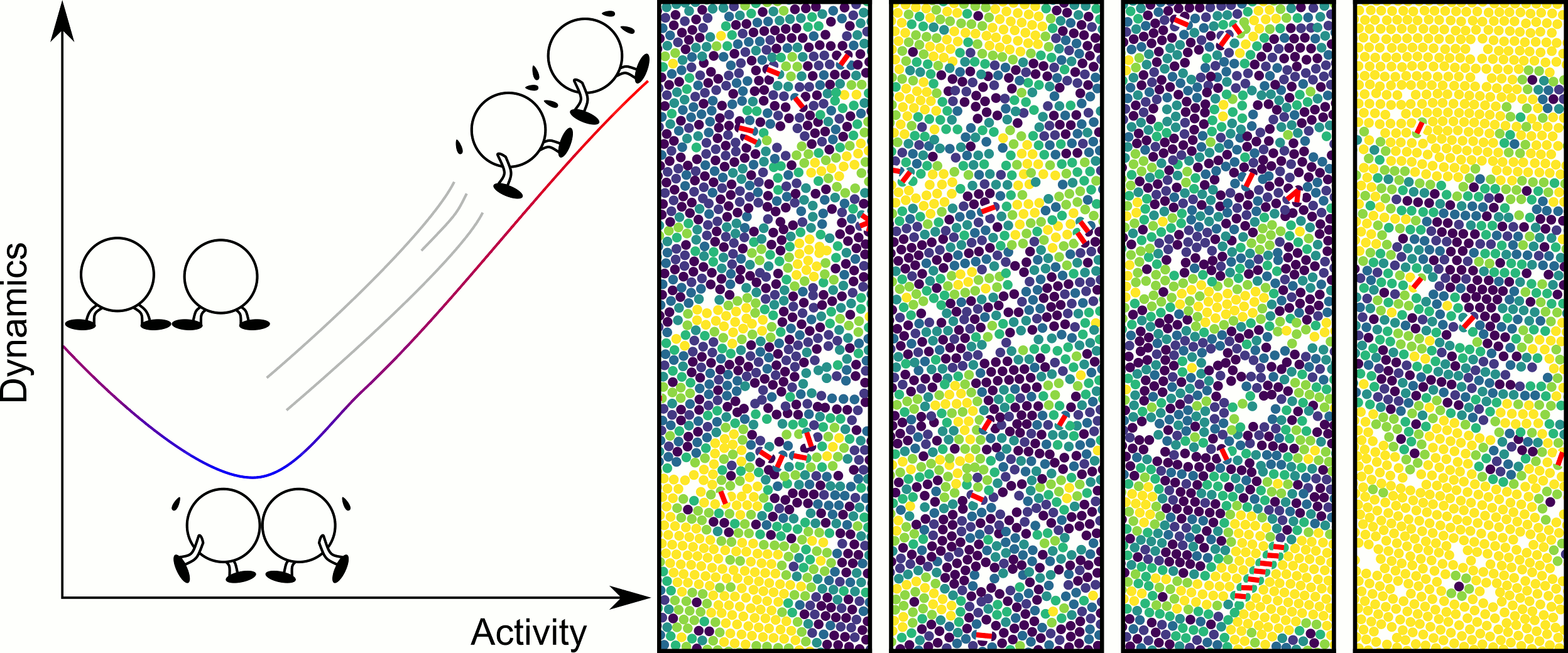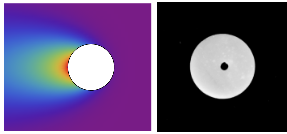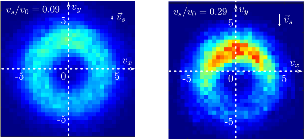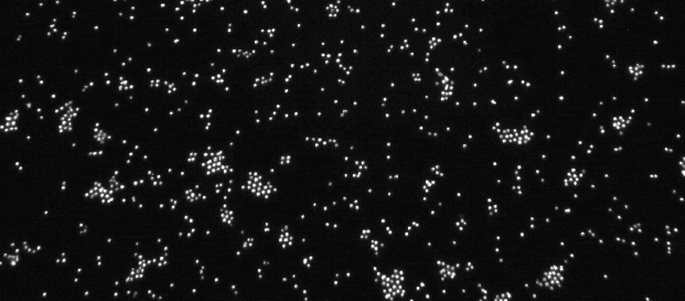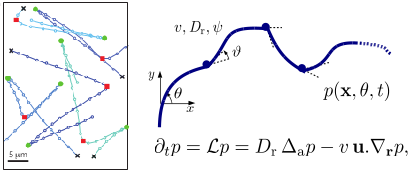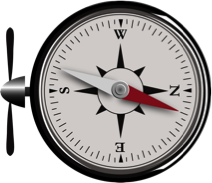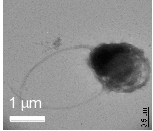Active matter and materials |
|
When many individuals are put together some spectacular collective effects can emerge such as flock of birds, swarms of bacteria, human crowds. Many efforts have recently attempted to create artificial systems mimicking their living counterpart. Active matter is a new class of complex systems, composed of particles that are made « active » through a local conversion of energy to create self-propulsion, which drives these systems very far from thermal equilibrium. This generates complex behaviors far richer than in equilibrium materials. We experimentally study active soft matter and more particularly the spontaneous structure and dynamics of semi-dilute and dense active colloidal structures. We are also interested in driven active matter: particles that have the ability to bias their motion in response to an external stimuli, indeed the ubiquitous ability of living active matter to bias its motion is of key importance in observed collective motions. |
|
Members: Cottin-Bizonne, Cécile |
|
Highlights
|
Marangoni forces in interfacial swimmersWe use numerical methods to investigate the role of Marangoni forces in the propulsion velocity of a symmetric interfacial swimmer. We find that their influence is crucial near the swimming instability but much less in the regime well above the threshold. Role of Marangoni forces in the velocity of symmetric interfacial swimmers, Boniface et al., Phys. Rev. Fluids (2021). |
|
When self-propulsion slows down a glassWe study experimentally the rearrangements of a dense crowd of microparticles able to self-propel. Unexpectedly, weak directional motion slows down rearrangements, even if strong self-propulsion actually fludifies the system. This effect stresses the importance of disordered agitation to fluidify a crowd or a tumour. Active glass: ergodicity breaking dramatically affects response to self-propulsion, Klongvessa et al., Phys. Rev. Lett. (2019). |
Yellow : particles moving in the same direction as their neighbours |
Camphor disks are isotropic objects yet self-propelWhile an isotropic object, a disk releasing surfactant such as camphor spontaneously sets into motion, making it a simple interfacial swimmer. We propose a point-source model to explain the symetry-breaking mechanism at play and compare the predictions on velocity to experiments. Self-propulsion of symmetric chemically active particles..., Boniface et al., Phys. Rev. E (2019). |
We study theoretically and experimentally the propulsion mechanism of isotropic interfacial swimmers. |
Swim polarization in sedimenting active colloidsCarefully controlling the sedimentation of our active colloids and gathering statistics on their instantaneous velocities, we were able to experimentally demonstrate the orientational swim polarization predicted some years ago. A good opportunity to confront experimental figures with theoretical predictions on sedimenting profiles and pressure(s) build up Sedimentation of self-propelled Janus colloids: polarization and pressure.., Ginot et al., New J. Phys. (2018). |
PDF of the active colloids velocity. The sedimenting angle increases from to left to right, showing the onset of swimming polarization upward. |
Active clustersAn assembly of self-propelled particles can self-organize into a "cluster phase". Those clusters transient groups that appears spontaneously, they can merge, break and exchange particles continuously. Combining high-statistics experi-mental data and the predictions of a simple model, we provide the first complete description of the active cluster phase. Aggregation-fragmentation and individual dynamics of active clusters, Ginot et al., Nature Communications. (2018). |
A two-dimensional collection of self-propelled particles (Janus colloids) self-organize into a phase of active clusters. |
Random walks of swimming bacteriaSwimming bacteria exhibit a variety of motion patterns, in which persistent runs are punctuated by sudden turning events. The statistical properties of these random walks have been established for the particular case where the turning events follow a Poisson process. Extending the framework of continuous-time random walks, we show how to treat the general, non-Poissonian case. Generalized run-and-turn motions: From bacteria to Lévy walks, Detcheverry F., Phys. Rev. E (2017). |
|
Driven active matter: magnetotactic bacteriaWe explore the behavior of magnetotactic bacteria as a benchmark system of driven active matter that offers great capabilities for physical and quantitative investigations. Such bacteria synthetize a permanent magnet, that can be easily remotely controlled by a magnetic field that orients the motion of the bacteria. We characterize the bacteria motion when facing a Poiseuille flow and evidence some structuring capabilities of active matter. Destabilization of a flow focused suspension of magnetotactic bacteria, Waisbord et al., Phys. Rev. Fluids (2016). |
Sketch and visualization of a magnetotactic bacteria (left and right). |
More highlights |



















